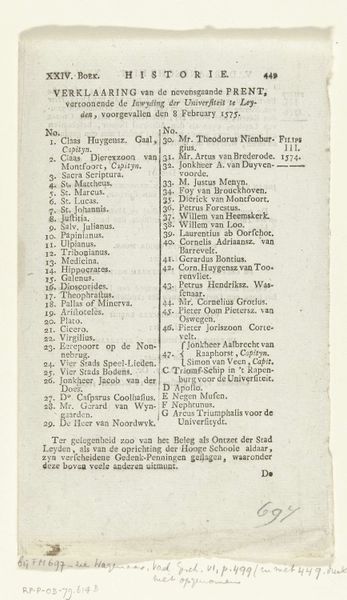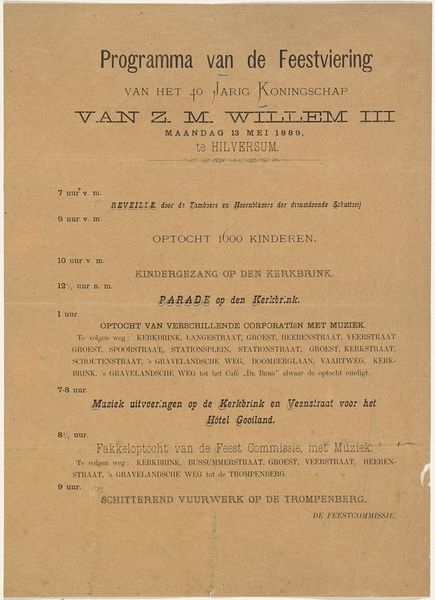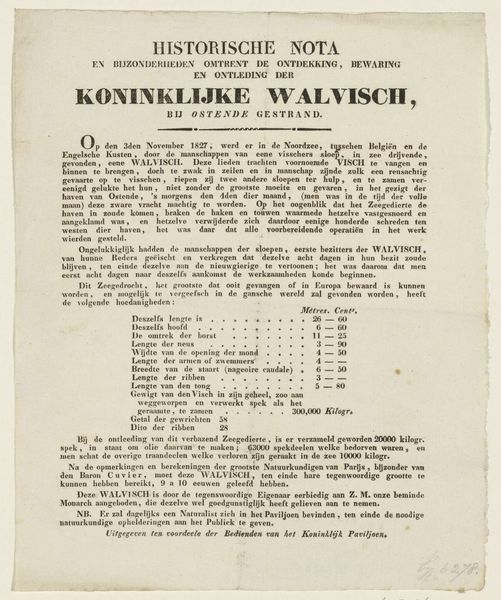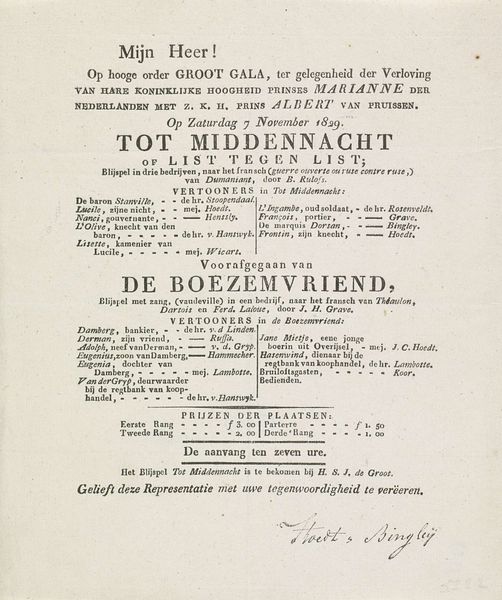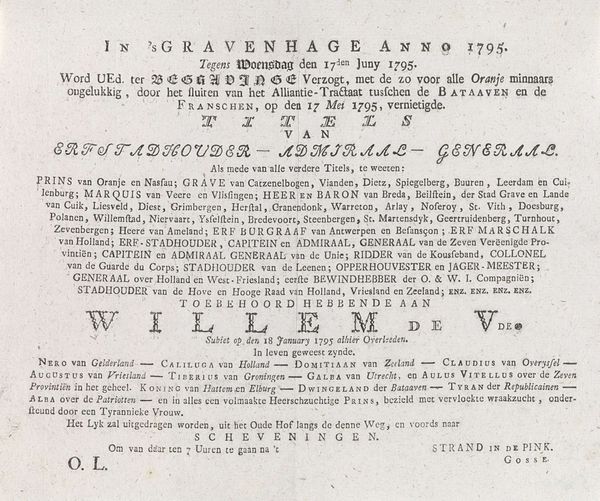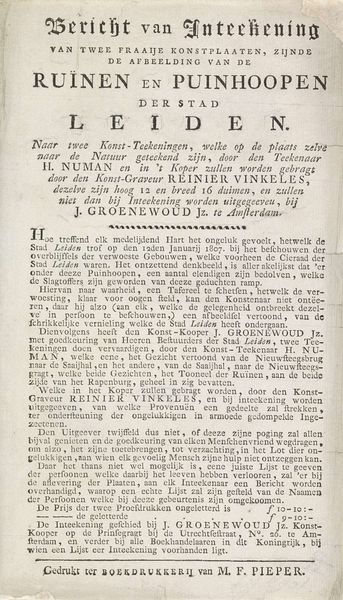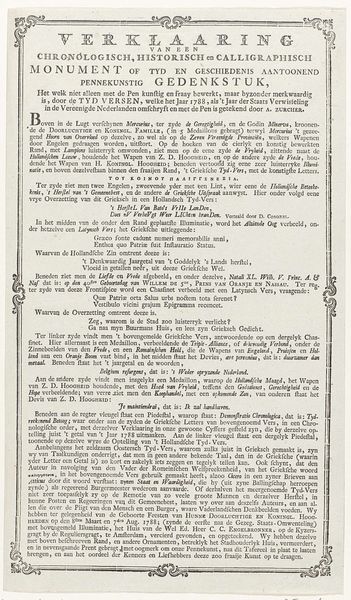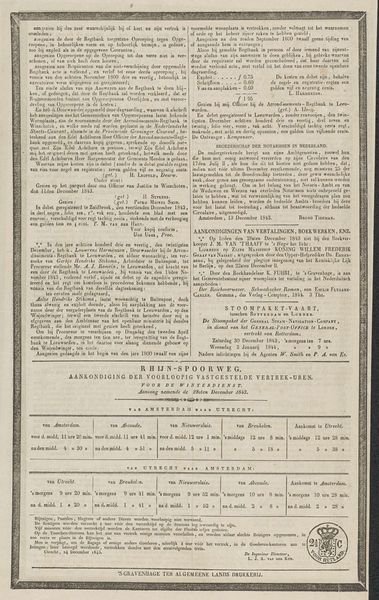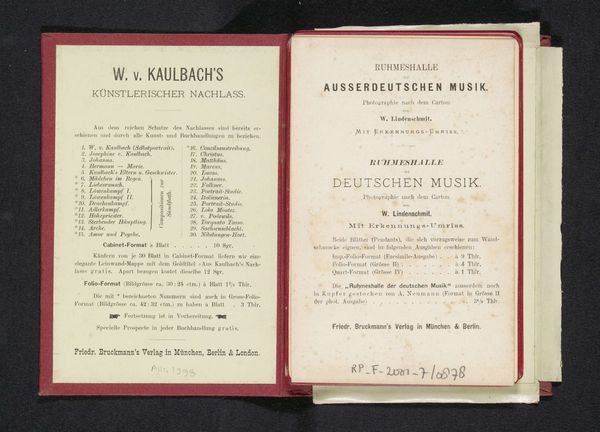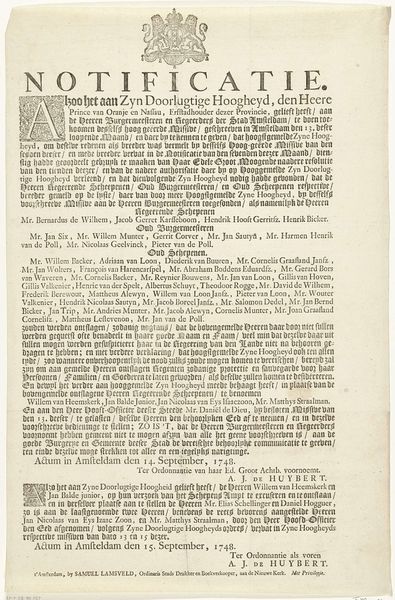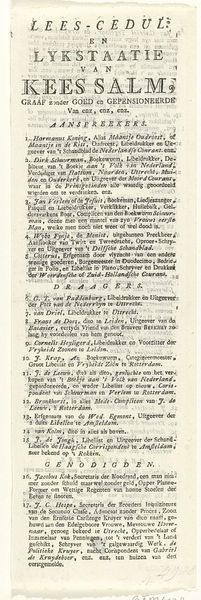
Programma voor de opvoering van de Gijsbrecht van Aemstel in de Amsterdamse Schouwburg op 2 januari 1850 1850
0:00
0:00
graphic-art, print, typography, poster
#
graphic-art
#
aged paper
# print
#
hand drawn type
#
paragraph style
#
typography
#
fading type
#
stylized text
#
thick font
#
handwritten font
#
classical type
#
poster
#
historical font
#
columned text
Dimensions: height 195 mm, width 103 mm
Copyright: Rijks Museum: Open Domain
This playbill, printed in 1850, advertises a performance of "Gijsbrecht van Aemstel" at the Amsterdam Theatre. It’s made from a simple sheet of paper, printed with black ink, typical for mass-produced items of the time. The material itself speaks volumes about the event’s social context. Paper was relatively affordable, making theatre accessible to a broad audience. The typography is straightforward, prioritizing clarity and functionality over elaborate design. This reflects a growing emphasis on efficiency and mass communication during the industrial era. The bill lists the play’s characters and performers, and the clear hierarchy of text suggests a structured theatrical production with defined roles and responsibilities. The inclusion of a second, shorter play and dances indicates a full evening's entertainment, catering to diverse tastes and attracting a larger crowd. This was, in essence, a commercial enterprise, relying on print to draw in an audience and ensure a successful performance. We see, therefore, the influence of both theatre and capitalism, collaborating to create a cultural experience.
Comments
No comments
Be the first to comment and join the conversation on the ultimate creative platform.


